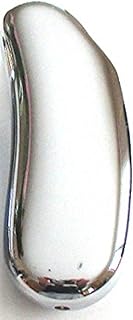The Science Behind BIC Lighters: A Simple Yet Powerful Device
BIC lighters, ubiquitous and seemingly simple, utilize a clever combination of physics and chemistry to create a reliable flame. Here's a breakdown of how they work:
1. The Fuel: Butane Gas
* Butane is a highly flammable hydrocarbon gas stored under pressure within the lighter.
* It's liquefied at room temperature and pressure, allowing for a compact storage solution.
2. The Valve: Controlling the Flow
* A small valve, often activated by a lever or a button, controls the flow of butane gas from the storage tank to the ignition mechanism.
* When the valve is opened, the pressure inside the lighter forces the butane gas out.
3. The Spark Mechanism: Igniting the Gas
* The most common type of BIC lighter uses a piezoelectric spark mechanism.
* This mechanism involves a small crystal that generates an electric spark when struck by a hammer.
* The hammer is activated by a spring mechanism when the lighter is clicked.
* The spark ignites the butane gas flowing from the valve.
4. The Flame: Controlled Combustion
* The burning butane gas creates a sustained flame.
* The lighter's design, often incorporating a small metal chimney, controls the airflow and helps stabilize the flame.
5. The Safety Features
* BIC lighters have several safety features to prevent accidental ignition:
* Child-resistant mechanism: Most lighters have a safety mechanism that prevents accidental activation by children.
* Flame adjuster: A wheel or knob allows users to adjust the flame size, preventing an uncontrolled flame.
* Flame shield: Some lighters have a metal shield around the flame to prevent burns.
In Summary:
The magic behind BIC lighters lies in a controlled release of pressurized butane gas, ignited by a spark mechanism and kept burning by a carefully designed airflow system. It's a simple yet ingenious design that has made these lighters a common household item for decades.


